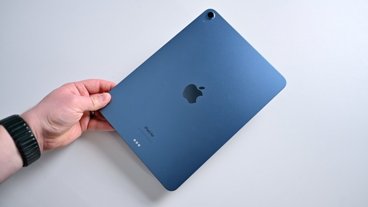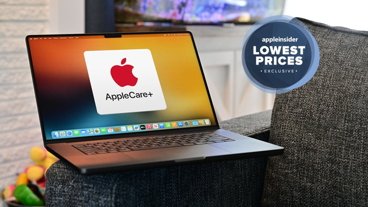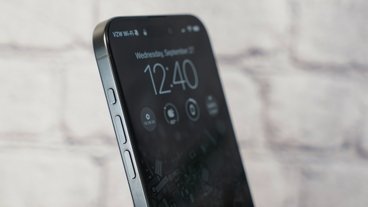AT&T deploying HSPA 7.2 mobile service ahead of new iPhones
AT&T said the upgrade to "High Speed Packet Access (HSPA) 7.2 technology," which delivers theoretical peak speeds twice that of the company's current 3G network, will continue through 2011. Next year, the company will also begin trials of LTE (Long Term Evolution), with deployment of that technology to begin in 2011. LTE plans to eventually reach theoretical peak speeds of 20 Mbps.
Both HSPA and LTE are components of the 3rd Generation Partnership Project (3GPP) family of technologies, which include GSM/EDGE and UMTS, the worldwide "3G" service supported by the iPhone 3G.
Because AT&T's network is currently based on 3GPP standards, the company can deliver the upgrade to HSPA 7.2 service immediately to support faster smartphones prior to the buildout of LTE, which isn't expected to become widely available until at least 2011-2012.
The LTE Future
AT&T's largest competitor, Verizon Wireless, is also planning to begin building out LTE but currently maintains a CDMA2000/EVDO network, which is incompatible with GSM/UMTS devices.
Once Verizon and AT&T both begin operating LTE service, it will be much easier for US consumers to buy phones that work on either network. AT&T CEO Randall Stephenson, speaking to Walt Mossberg at All Things Digital, noted that LTE will also support data roaming across providers, saying "It’s in all our best interests."
With roaming agreements, the LTE investments made by AT&T and Verizon will both benefit each other's customers. For years, both companies have been dumping billions into networks that can only serve phones related to their own mobile service technology families, which has resulted in massively wasteful competition.
AT&T's upgrade plans and "iPhone 7.2"
AT&T says its current 3G service is available in 350 major US metro areas, with deployment in another 20 planned this year. The company stated that its new HSPA 7.2 technology "will be deployed widely in the network, with the benefits of the network upgrade to be announced on a local basis as the faster speeds are turned up."
AT&T also said it will introduce "multiple HSPA 7.2-compatible laptop cards and smartphones beginning later this year." Next month, Apple is expected to release a new iPhone model that supports HSPA 7.2 service. In addition to having access to a faster network, the new iPhone model is expected to have a significantly faster processor, enabling it to better handle the data it can receive, resulting in faster overall operation.
Asked about whether the emergence of new smartphone platforms, including Google's Android and Palm's WebOS, would be problematic for AT&T, Stephenson answered, "Do I want to see fewer platforms? Yes, it’s better for my business. Will I see fewer platforms? I don’t think so. So we need to take advantage of it and use it as an opportunity."
Speaking of the company's iPhone deal with Apple, Stephenson said “It’s worked out terrific. We have no complaints.†While he noted that the company has "incurred dilution," he also said it has benefited by getting the premiere customer in the space, one with high data usage and low churn. “I’m very pleased with the deal,†Stephenson said.
Covering the All Things Digital conference, John Paczkowski wrote that "its fourth-quarter AT&T added 2.1 million wireless subscribers. 1.9 million of them were iPhone accounts. 40 percent of those–about 760,000–were new to AT&T."
Other network upgrades for 2009
Along with the upgrade to HSPA 7.2, AT&T also reported plans to build out other network improvements this year as part of a capital investment plan costing $17-18 billion. Elements include:
- Near-Doubling Radio Frequency Capacity. In 2008 and 2009 to date, high-quality 850 MHz spectrum has been deployed in more than half of AT&T's 3G network footprint to improve overall coverage and in-building reception, with additional markets planned for later in the year.
- More Bandwidth to Cell Sites. AT&T is adding fiber-optic connectivity and additional capacity to thousands of cell sites across the country this year, expanding the critical connections that deliver traffic from a cell site into the global IP backbone network. These upgrades will support the higher mobile broadband speeds enabled by both HSPA 7.2 and LTE.
- More Cell Sites. Deployment of about 2,100 new cell sites across the country.
- Wi-Fi Integration. Many AT&T smartphones will be able to switch seamlessly between 3G and Wi-Fi connectivity. AT&T customers with qualifying smartphone and 3G LaptopConnect plans have access to the nation's largest Wi-Fi network - more than 20,000 hotspots, including locations in all 50 states - at no additional charge. AT&T's global Wi-Fi footprint covers more than 90,000 hotspots, and AT&T also can create permanent or temporary extended Wi-Fi zones in areas with high 3G network use, like a grouping of hotels or a festival.
- MicroCells. Customer trials leading toward general availability of AT&T 3G MicroCell offerings, which utilize femtocells to enhance in-building wireless coverage.
 Prince McLean
Prince McLean













 David Schloss
David Schloss
 Andrew Orr
Andrew Orr

 Marko Zivkovic
Marko Zivkovic
 Wesley Hilliard
Wesley Hilliard
 Andrew O'Hara
Andrew O'Hara
 William Gallagher
William Gallagher
 Amber Neely
Amber Neely







42 Comments
What's the point if you can't stream porn on an iphone? Seriously.
I wonder if these upgrades are the cause of the AT&T 3G data outages I'm seeing every weekend in the Philly area. It will work all week but as soon as Saturday hits...Boom!...3G service elicits a "could not establish data connection" error from my iPhone.
If I switch off 3G in Settings, (slow) connectivity returns via EDGE. As soon as Monday rolls around, 3G works again.
It's not just one tower--it's all along the Route 202 corridor from Wilmington, DE up through Valley Forge, PA. Usually with 5 bars of service and fully functional voice & text--only data is affected.
I welcome AT&T upgrading their infrastructure, but it bothers me if it comes at the expense of current functionality.
What's the point if you can't stream porn on an iphone? Seriously.
Who says you can't already do that?
What's the point if you can't stream porn on an iphone? Seriously.
It will probably work better in an office setting. Why don't you try it at the next staff meeting and let us know...
Whats are they talking about with the 3G and being able to seamlesly switch too wifi?
Just a few questions, they are talking about phone calls over wifi? And if so are they only talking about their special hot spots?
Because wouldn't it just be awsome that when your at home you can use your personal wifi for calling on the phone? Is that possible? Could/would they do that?
This would be awsome cuz the cell sservice at my house comes in and out, that would be perfect!!!
What do you think?